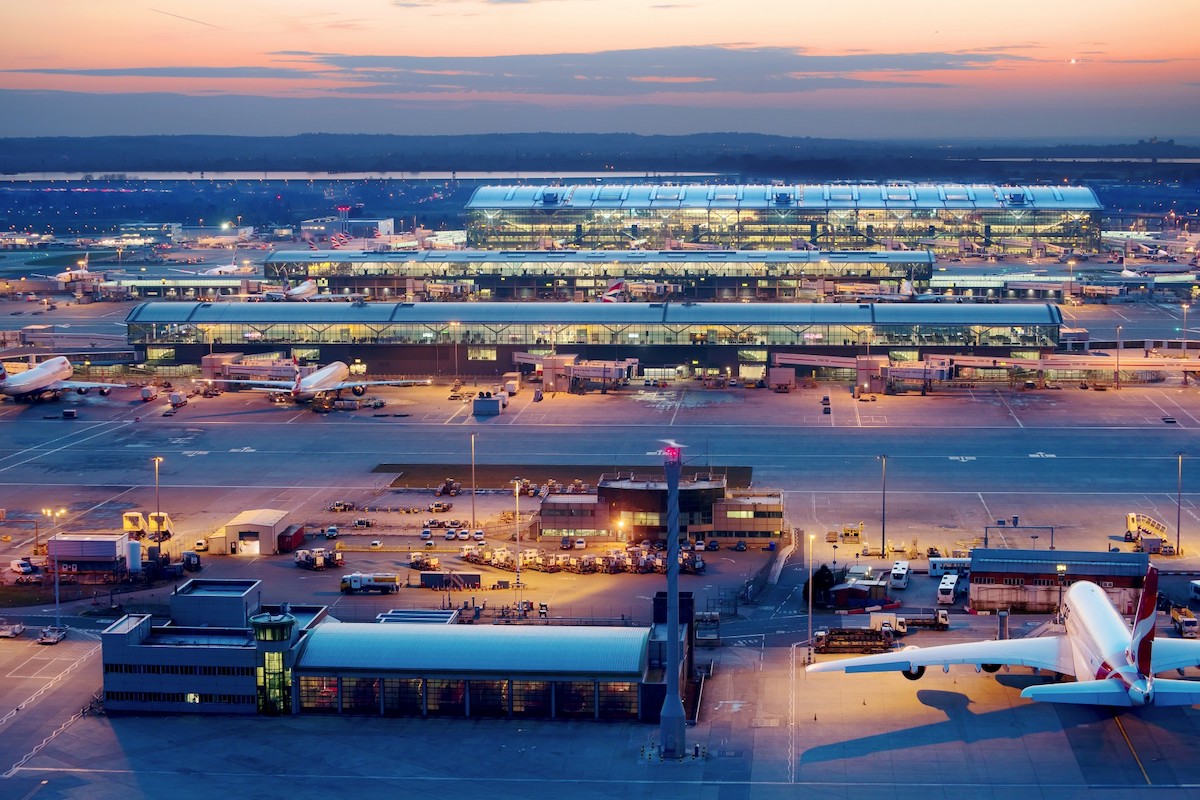London Heathrow Flight Cuts Could Help European Airlines Return to Black

Photo Credit: Heathrow Airport
New capacity caps at London's Heathrow Airport are the latest blow to European air travel this summer. But the needed flight cancellations are minor compared to what the industry has already undertaken, and may help drive some European airlines back to the black simply by offering more pricing power on tighter inventory.
Heathrow CEO John Holland-Kaye, in a letter to passengers on July 12, said the airport has asked airlines to stop selling seats and pull roughly 4,000 daily seats from their schedules through September 11 for a target average daily count of 100,000 passengers. "Our objective is to protect flights for the vast majority of passengers at Heathrow this summer and to give confidence that everyone who does travel through the airport will have a safe and reliable journey," he said.
While the headline 4,000 seats sounds like a lot, it is not. That works out to the cancellation of just 23 flights operated by a British Airways Airbus A321 with 177 seats every day. It would equal even fewer flights if the reductions are made to ones operated with larger widebody aircraft.
For comparison, OAG data show that British Airways, EasyJet, Ryanair, and Wizz Air — combined they operate a third of all capacity in Europe — have already reduced European capacity by more than 10 percent as of July 11 since the end of March.
Still, it is a sad reality when an airport — that normally wants more travelers, both for financial reasons and prestige — is turning away flyers. But it hardly comes as a surprise given the state of play in Europe this summer.
Heathrow "reckoned 52 million passengers this year. They were saying 45 million in November. Already in [the second quarter], their numbers are wrong by about 30 percent," British Airways CEO Sean Doyle said in May. "If you look at any scheduled forecast for Heathrow, you're looking at passenger numbers, which will be north of 70 million."
Doyle continued: "We were saying all along in November and December, the demand would recover. Despite Omicron, it’s continued to recover, and it’s unfortunate that the terminal capacity isn’t ready."
In response to criticisms of Heathrow staffing levels, Holland-Kaye said the airport has the same number of security personnel as it did before the pandemic. However, shortages exist among ground handlers and check-in staff that, in a classic pass of the buck, are "contracted by airlines."
British Airways, which before the pandemic flew nearly 47 percent of seats at Heathrow, has already made an effort to reduce schedules at the airport. The airline first cut its planned Heathrow schedules in May by 10 percent through October. And then, earlier in July, raised those cuts to 13 percent of planned schedules by removing another roughly 11,300 flights over the period. If British Airways were forced to cut another 20 flights a day through September 11 when the capacity cap lifts, that would represent a further 1,220 flights.
Holland-Kaye indirectly acknowledged British Airways efforts: "Some airlines have taken significant action, but others have not, and we believe that further action is needed now to ensure passengers have a safe and reliable journey."
He did not name names but, with Heathrow one of the most sought after airport in Europe to serve for airlines, few other carriers have made similar cuts. Unless British Airways cries uncle, other airlines — including those only operating long-haul flights — are likely to face the burden of Heathrow's reductions.
After Amsterdam Schiphol airport introduced its own capacity restrictions in June, KLM and Transavia cancelled flights but foreign carriers, including American Airlines and United Airlines, also took action. American stopped selling seats on its flights to Amsterdam — though it did not cancel any flights or bump already booked passengers — for most of the month of July. And United cancelled its daily Washington-Amsterdam nonstop in July and August.
Foreign airlines, or even Heathrow's second largest Virgin Atlantic Airways, could be asked to contribute to the reductions needed to hit the 100,000 daily seats goal.
And, in a bit of good news for airlines, suspending the sale of seats or cancelling flights removes capacity from the system thus driving up fares for the remaining seats in the market. European discounter Wizz Air noted this on July 11 when it cited industry capacity cuts for boosting fares, and raising its forecast of a “high-single digit” increase in unit revenues in the September quarter compared to 2019. That represents a nearly 20-point swing in unit revenues from the June quarter. Other airlines are likely to give similar guides as they provide updates.
Conversely, airlines will lose revenue as a result of the reductions. OAG estimated that the lost revenue at Heathrow alone could amount to as much as $550 million through September. However, there are also cost savings when flights schedules are reduced — for example, an airline doesn't need to buy fuel for a parked plane — and the higher yields on the remaining flights could outweigh the lost revenue.
Heathrow's capacity caps are the latest disruption passengers face this summer but they might, just might, help inch the some of the continent's airlines to their first profits since the pandemic hit.
